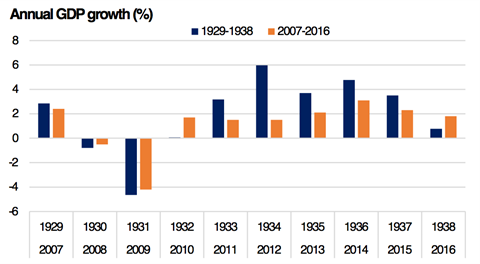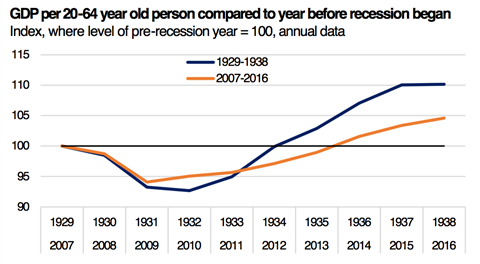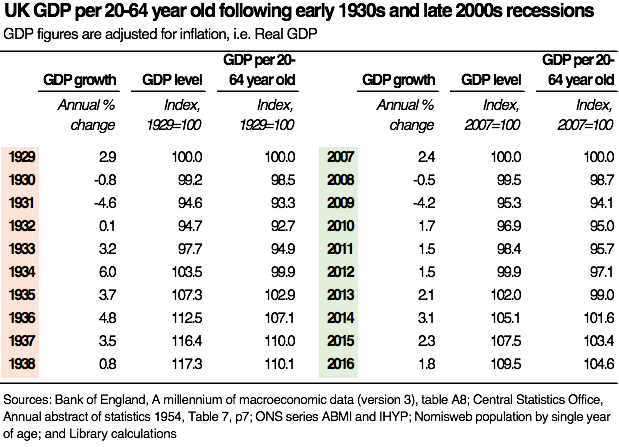UK recovery now worse than after Great Depression
The UK’s economic recovery over the last decade has been slower than after the Great Depression according to new research by the House of Commons library commissioned by Liam Byrne, chair of the All-Party Parliamentary Group on Inclusive Growth.
UK recovery now worse than after Great Depression
The research confirmed that the path of the recession in 1929-31 followed a similar path to the crisis of 2008-09 but the recovery over the last ten years has been much slower.
Ten years after the Wall Street financial crash, Britain had left the Gold Standard and, like today, pursued a policy of low interest rates.
- By 1938, the economy had grown by over 17% – even though unemployment remained high at over 10%.
- Today, the UK has similarly adopted a strategy of low interest rates – using quantitative easing – but the economy has recovered far slower, despite far lower unemployment, growing by just by under 10%.
Liam Byrne MP, chair of the All-Party Parliamentary Group on Inclusive Growth said:
“These terrible figures underline one profound point: Britain’s economic model is simply incapable of ‘bouncing’ our economy back to trend. The conclusion is inescapable: Our economic model, our theory and practice now need to change.”
The House of Commons library reported:
“The Great Depression in the US was far worse, in terms of GDP at least, than in the UK. Real-terms GDP fell by about 25% between 1929 and 1933, while in the UK it fell by approximately “only” 5.5% between 1929 and 1931. That’s not to undermine the severity of the crisis in the UK, as unemployment rates peaked at 15% in 1932 (higher using some other sources) and were above 10% during 1930-1935.[1]
“However, concentrating on GDP, this means the 1929-1931 recession in the UK actually followed a similar path to the 2008-2009 recession.
“The recovery in the 1930s was stronger than that of the 2010s. This can be seen in the chart below comparing annual GDP growth (in real terms) during the period 1929-1938 and 2007-2016.”

“The figures above are for overall GDP growth and not adjusted for population change.
“However, using a measure of UK GDP divided by the population aged 20-64 does not change the main conclusion: the depth of the recessions were similar and the recovery in the 1930s was swifter.”

Sources and notes
Data from the past decade comes from the ONS. Historical GDP data is sourced from the Bank of England’s “A millennium of macroeconomic data (version 3)”. Population data from the late 1920s and 1930s are sourced from the Central Statistics Office’s Annual abstract of statistics 1954 . Population by 5-year age band are provided for 1931 and 1939 (this is why I used ages 20-64 rather than 18-64). I have interpolated the population change from 1931 to 1939 to get annual figures for this period. I then used the average annual change for this age group over this period and applied it to the 1931 figure to get 1930 and 1929 estimates.

[1] Main source of historical UK data is Bank of England, A millennium of macroeconomic data (version 3)
Leave a Reply
Leave a Reply